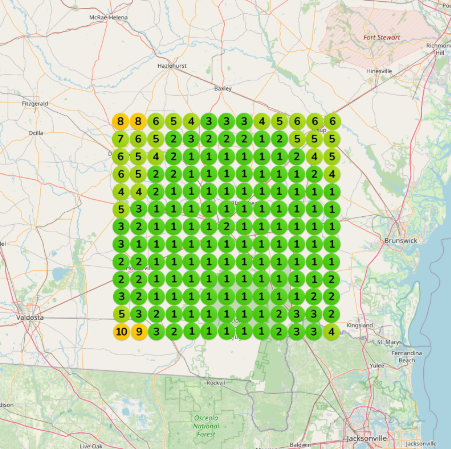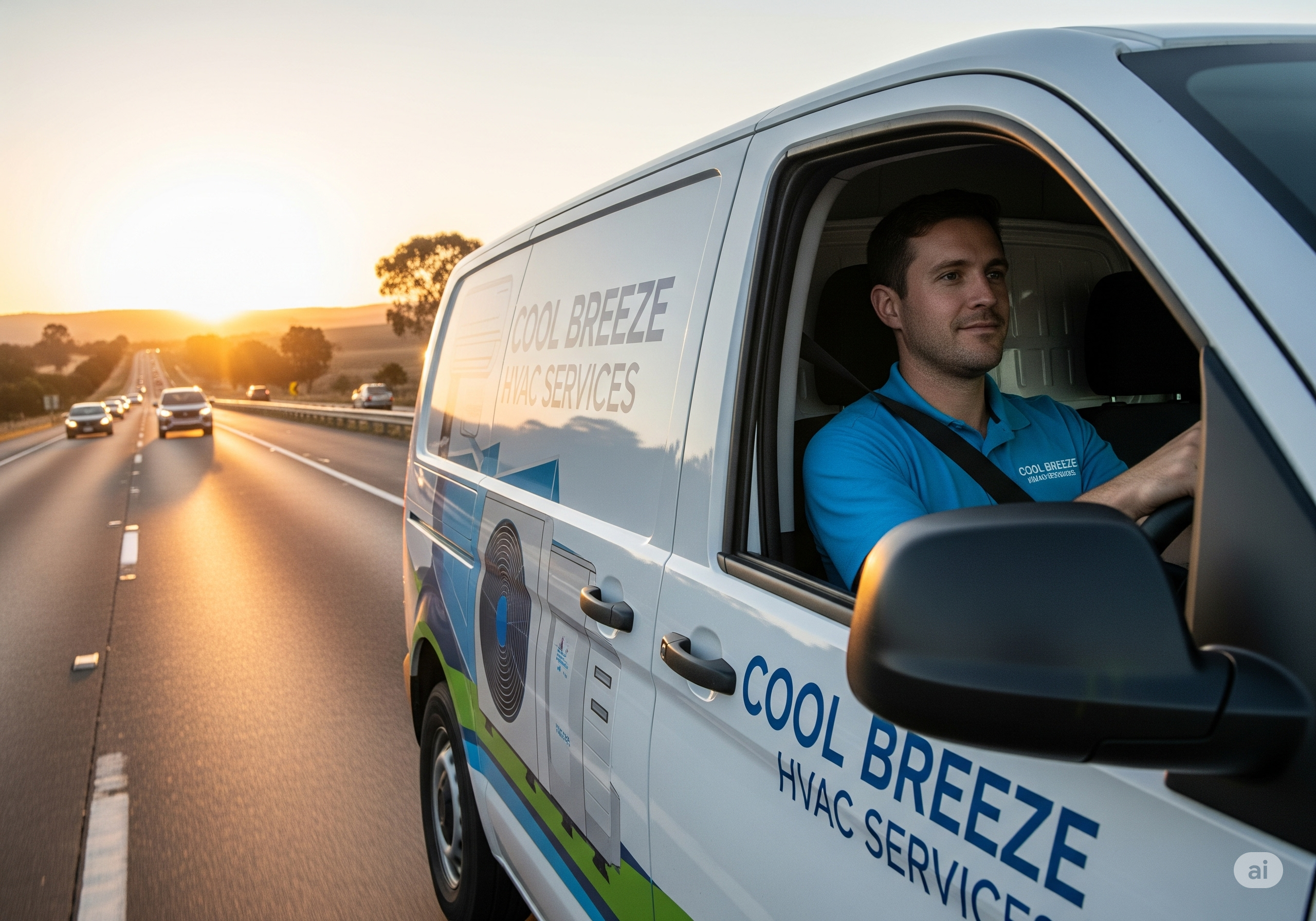For HVAC businesses eager to expand their client base beyond the city limits, mastering service-area SEO is a game changer. Many companies find themselves stuck in a “location lock,” visible only in the immediate vicinity of their main office, missing out on potential customers in nearby towns. In this guide, we’ll explore practical strategies to enhance your Google Business Profile and employ hyperlocal keywords, making sure your services are seen where they matter most. By crafting effective location pages and leveraging AI tools for SEO, you can transform your multi-city coverage into increased visibility and revenue. Join us as we break down the common SEO mistakes and provide actionable steps to help your HVAC business grow in new areas.
Mastering Service-Area SEO
Service-Area SEO is crucial for HVAC businesses looking to expand their reach beyond their immediate location. This section will cover the fundamentals of local SEO, strategies to overcome location-based challenges, and how to properly set up your Google Business Profile.
Understanding Local SEO Basics
Local SEO is the practice of optimizing your online presence to attract more business from relevant local searches. For HVAC companies, this means appearing in search results when potential customers in your service area look for heating and cooling services.
The foundation of local SEO lies in providing accurate and consistent information across all online platforms. This includes your website, social media profiles, and business directories.
One key element is the use of location-specific keywords throughout your online content. For example, “air conditioning repair in [City Name]” can help you rank for local searches.
Another important aspect is gathering positive reviews from satisfied customers. These reviews not only boost your credibility but also improve your visibility in local search results.
Overcoming Location Challenges
HVAC businesses often face the challenge of serving multiple areas without having physical locations in each one. This can make it difficult to rank in local search results for those areas.
One effective strategy is to create location-specific landing pages on your website. These pages should include unique content tailored to each service area, highlighting local information and your services in that particular location.
Another approach is to use schema markup on your website. This structured data helps search engines understand your service areas and can improve your visibility in local search results.
Participating in local events or sponsoring community activities in your target areas can also help establish your presence and earn valuable backlinks from local websites.
Setting Up Google Business Profile
Google Business Profile (formerly known as Google My Business) is a free tool that allows you to manage how your business appears on Google Search and Maps. Proper setup is crucial for local SEO success.
-
Claim and verify your business profile.
-
Provide accurate and complete information, including your business name, address, phone number, and website.
-
Choose relevant categories for your business, such as “HVAC Contractor” or “Air Conditioning Service.”
Add high-quality photos of your team, vehicles, and completed projects to make your profile more appealing. Regularly post updates about your services, promotions, or helpful tips to keep your profile active and engaging.
Remember to list all the areas you serve in your profile. This helps Google understand your service area and can improve your visibility in those locations.
Creating Effective Location Pages
Location pages are a powerful tool for expanding your HVAC business’s online presence across multiple cities. This section will guide you through creating compelling content and structuring these pages for maximum SEO impact.
Crafting High-Impact Content
When creating content for your location pages, it’s essential to strike a balance between providing valuable information and optimizing for search engines. Each page should offer unique, locally relevant content that serves your potential customers’ needs.
Start by researching the specific HVAC needs and challenges in each location. For example, coastal areas might have different air conditioning requirements compared to inland regions.
Include local landmarks, climate information, and any regulations specific to HVAC services in that area. This not only helps with SEO but also demonstrates your local expertise to potential customers.
Consider adding customer testimonials or case studies from that specific location to build trust and credibility. Remember, the goal is to create content that is both informative and engaging for your local audience.
Structuring Pages for SEO Success
The structure of your location pages plays a crucial role in their SEO performance. Here are some key elements to include:
-
A clear, location-specific title tag and meta description
-
Headings (H1, H2, H3) that incorporate location and service keywords
-
Location-specific content that addresses local HVAC needs and solutions
-
A unique URL structure that includes the location name (e.g., www.yourcompany.com/locations/city-name)
Ensure that your location pages are easily accessible from your main navigation menu. This helps both users and search engines find these pages easily.
Include a map showing your service area and embed a Google Map if you have a physical location in that city. This can improve local search visibility and provide useful information to potential customers.
Leveraging Hyperlocal Keywords
Hyperlocal keywords are specific search terms that include neighborhoods, landmarks, or even street names. They are powerful tools for HVAC businesses looking to target very specific geographic areas within their service range.
Importance of Local Keywords
Local keywords are the backbone of any successful service-area SEO strategy. They help search engines understand where your business operates and match you with relevant local searches.
For HVAC businesses, local keywords might include phrases like “air conditioning repair in [Neighborhood Name]” or “heating installation near [Local Landmark]”. These specific terms can help you appear in searches from potential customers in those exact locations.
Using local keywords effectively can give you an edge over competitors who might only be targeting broader, city-wide terms. It allows you to capture more specific, intent-driven searches that are more likely to convert into actual customers.
Tools for Keyword Research
Several tools can help you identify effective local keywords for your HVAC business. Here are some popular options:
-
Google Keyword Planner: This free tool from Google provides search volume data and keyword suggestions based on your location.
-
SEMrush: Offers detailed keyword analytics and competitor analysis, helping you find local keywords your competitors are ranking for.
-
Moz Local: Provides insights into local search performance and helps identify opportunities for improvement.
When using these tools, focus on keywords with decent search volume but lower competition. This balance can help you find opportunities where you can rank more easily while still attracting potential customers.
Remember to also use Google’s “People Also Ask” and “Related Searches” sections for ideas. These can provide valuable insights into what local customers are searching for in relation to HVAC services.
Using AI Tools for SEO
Artificial Intelligence (AI) is revolutionizing the way businesses approach SEO. For HVAC companies, AI tools can streamline content creation and provide valuable insights into SEO performance across multiple service areas.
Automating Content Creation
AI-powered content creation tools can significantly speed up the process of generating location-specific content for your HVAC business. These tools can help you:
-
Generate unique descriptions for each service area
-
Create location-specific blog posts or FAQs
-
Develop meta descriptions and title tags for multiple location pages
While AI can provide a great starting point, it’s important to review and customize the generated content. Add your unique business voice and local insights to ensure the content remains authentic and valuable to your audience.
Remember, AI should complement, not replace, human expertise. Use it as a tool to enhance your content strategy, not as a substitute for genuine local knowledge and customer understanding.

Monitoring SEO Performance
AI tools can also help you track and analyze your SEO performance across multiple locations. These tools can:
-
Monitor your rankings for local keywords in different service areas
-
Analyze competitor performance in various locations
-
Identify trends and opportunities in local search behavior
Look for AI-powered SEO tools that offer location-specific reporting. This can help you understand which areas are performing well and where you might need to focus more effort.
Some tools can even provide predictive analytics, helping you anticipate changes in local search trends. This can be particularly useful for seasonal businesses like HVAC, allowing you to prepare content and campaigns in advance.
Avoiding Common SEO Mistakes
While implementing service-area SEO strategies, it’s crucial to be aware of common pitfalls that can hinder your efforts. This section will discuss two major mistakes: keyword stuffing and creating duplicate content.
Pitfalls of Keyword Stuffing
Keyword stuffing is the practice of overusing keywords in your content in an attempt to manipulate search rankings. This tactic not only makes your content unnatural and difficult to read but can also result in penalties from search engines.
For HVAC businesses, this might look like repeatedly using phrases like “best HVAC service in [City Name]” throughout your content without adding value. Instead, focus on incorporating keywords naturally and providing useful information to your readers.
Remember, search engines prioritize user experience. Content that genuinely answers user queries and provides value will perform better in the long run than content stuffed with keywords.
Risks of Duplicate Content
When creating location pages for multiple service areas, it can be tempting to use the same content and simply change the city name. However, this approach can lead to duplicate content issues, which can negatively impact your SEO efforts.
Duplicate content confuses search engines about which page to rank for a given query. It can also dilute the SEO value of your pages, potentially leading to lower rankings overall.
To avoid this, ensure each location page has unique, valuable content. This might include:
-
Specific information about HVAC needs in that area
-
Local customer testimonials or case studies
-
Details about local regulations or rebates related to HVAC services
Remember, the goal is to create pages that are genuinely useful to people in each specific location. This not only helps with SEO but also improves the user experience for potential customers in those areas.
Ready to Dominate Nearby Cities?

Expanding your HVAC business through service-area SEO doesn’t have to be overwhelming. With the right strategy—and the right tools—you can break through local barriers and get seen in the cities that matter most. Boost Locally AI specializes in helping service-based businesses like yours unlock multi-location visibility using advanced SEO automation and AI-driven content. Ready to grow beyond your ZIP code? Let’s put your business on the map—literally. Reach out to Boost Locally AI today to get started.
